Most know by now that poop is of great interest for us archaeologists. Recently, the so-called ‘archaeology of dung’ has resulted in numerous cross-geographical publications confirming the use of animal dung in archaeological deposits as the main fuel source and several other purposes. Most of these studies focus on the analysis of the microscopic evidence attributable to dung, combining multi-proxy approaches to investigate the biological components and potential markers of herbivore dung, as well identifying archaeobotanical indications from dung pellets and related sediments. Less numerous are studies concerning the identification of dung as a tempering agent in ceramic material.
In a new paper just published, Giulia D’Ercole and I aimed to replicate, observe, and discuss the recipe utilised by the ancient potters of Sai Island (northern Sudan) in the New Kingdom period using an experimental approach. We discuss the possible adoption of organic inclusions, and especially animal dung, as tempering agents to produce some of the locally made Nubian and Egyptian style ceramics. We think that the use of animal dung within the large set of pottery production offers important fresh insights into both long-standing traditions and cultural encounters (Budka and D’Ercole 2022).
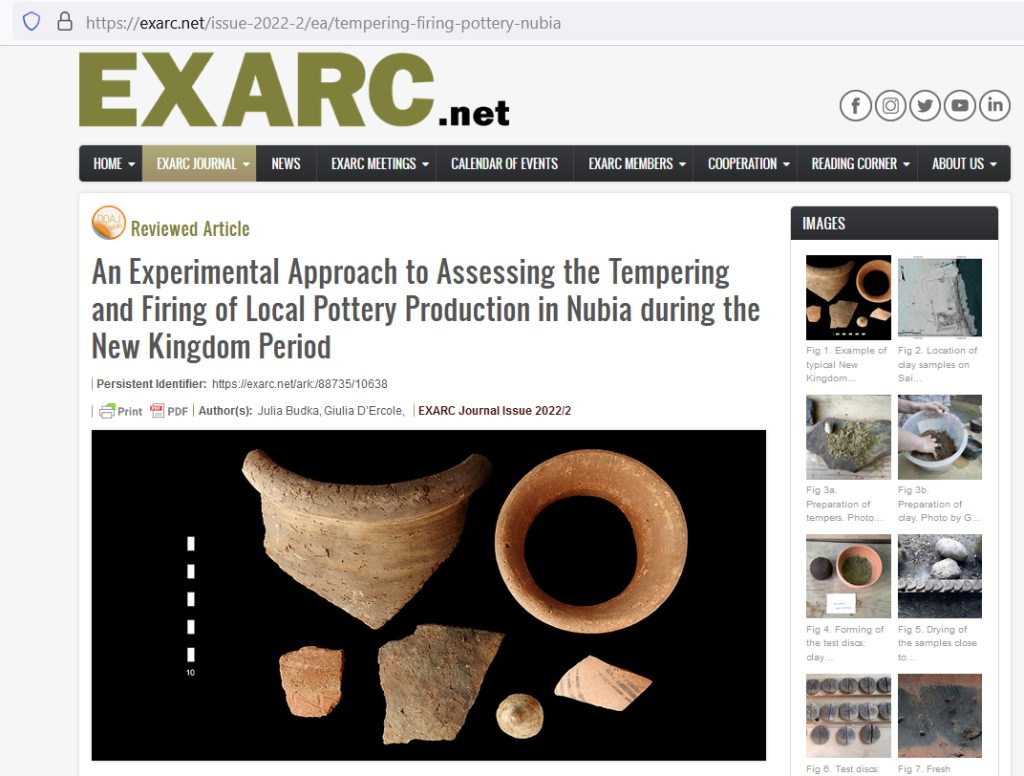
One observation in this paper was also that in terms of the firing process of our samples, it must have been at a low temperature resulting in a minimal supply of oxygen, as in most cases the typical relicts left by the combustion of organic materials were still visible. Questions regarding kilns for both handmade and wheel-made vessels, as opposed to open firing techniques, need to be investigated further, as does the kind of fuel used for firing pottery. Recent research suggests that fresh wood and animal dung were used in tandem in pottery kilns (see the case of the smelting furnace from Egypt, Verly et al. 2021), and possibly even for open firing.
This brings me to our most recent experiments connected with firing pottery. I spent the last weekend at Asparn (Austria), at the MAMUZ museum and had the pleasure to participate once again in the experimental archaeology class hosted by the University of Vienna.
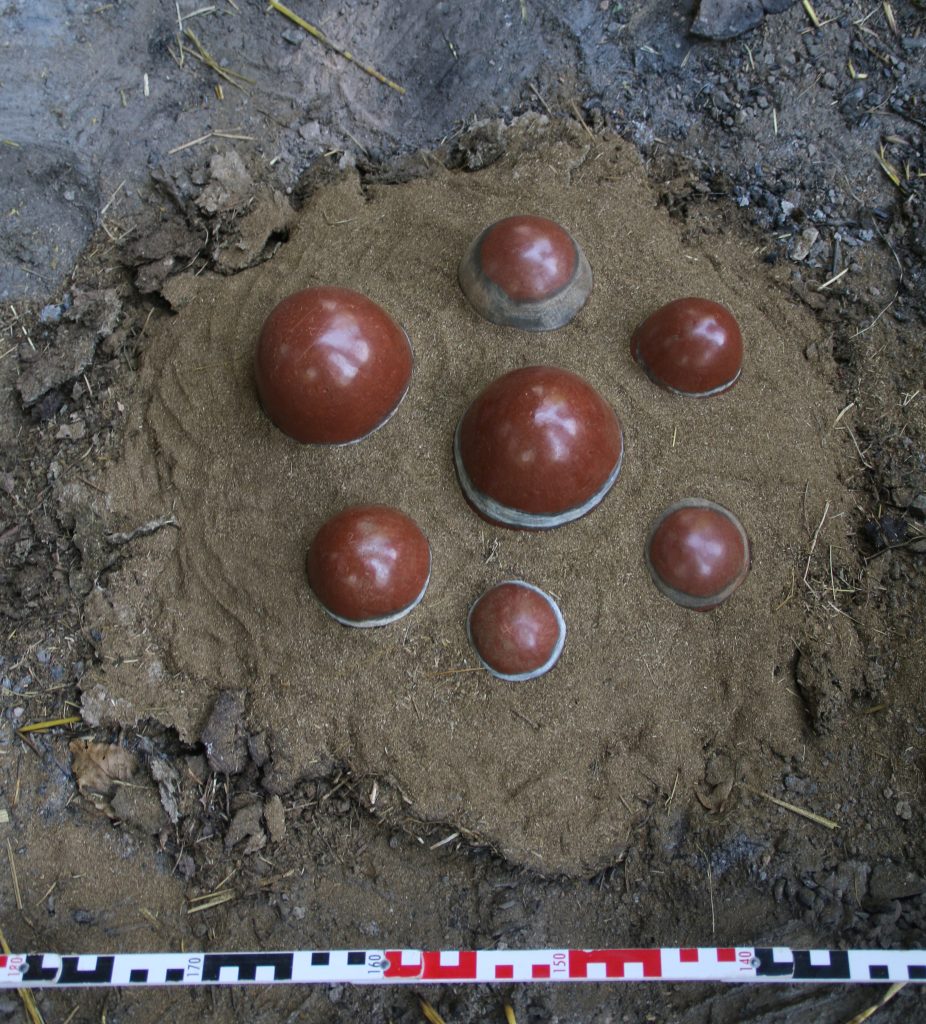
Together with Vera and Ludwig Albustin and other colleagues, we were busy on the first day firing high quality replicas of Classical Kerma beakers. We used goat dung as the main fuel, but also some fresh wood and the results were really good – it went fast, and the appearance of the pots is very close to the ancient ones. We will clearly continue in this line, making more experiments with mixed fuels for firing pottery, for example with adding reed or straw.
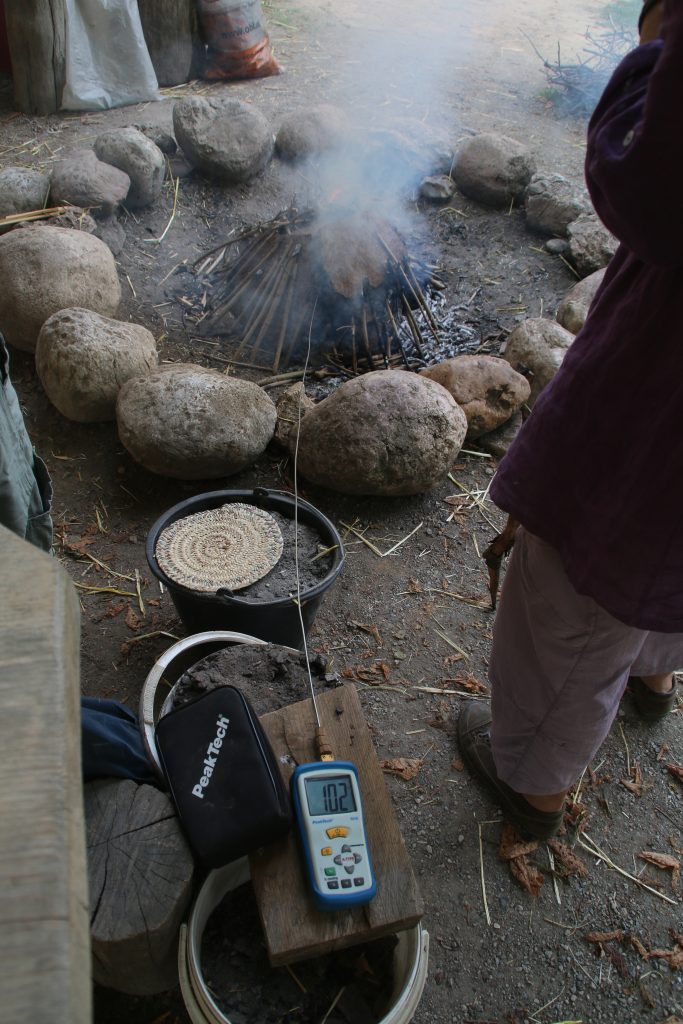
The second part of our experiments this year in Asparn was dedicated to fire dogs, their possible use and cooking pots. Our current line of research aims to test the advantage of using fire dogs together with Nubian style cooking pots – they differ slightly in shape and size of the Egyptian ones. I believe it is possible that the inhabitants of Sai found some creative ways to combine Egyptian fire dogs with Nubian cooking pots – thus they might have created something new.
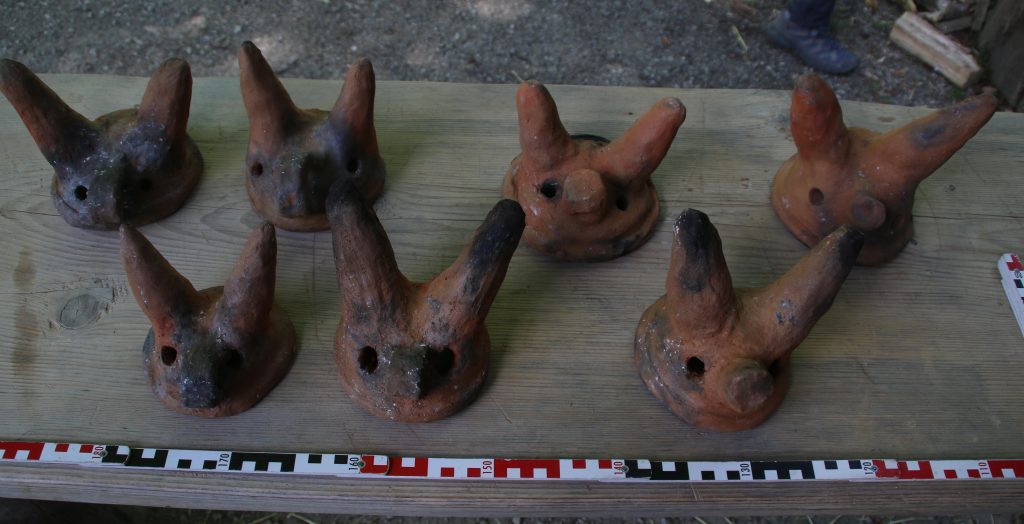
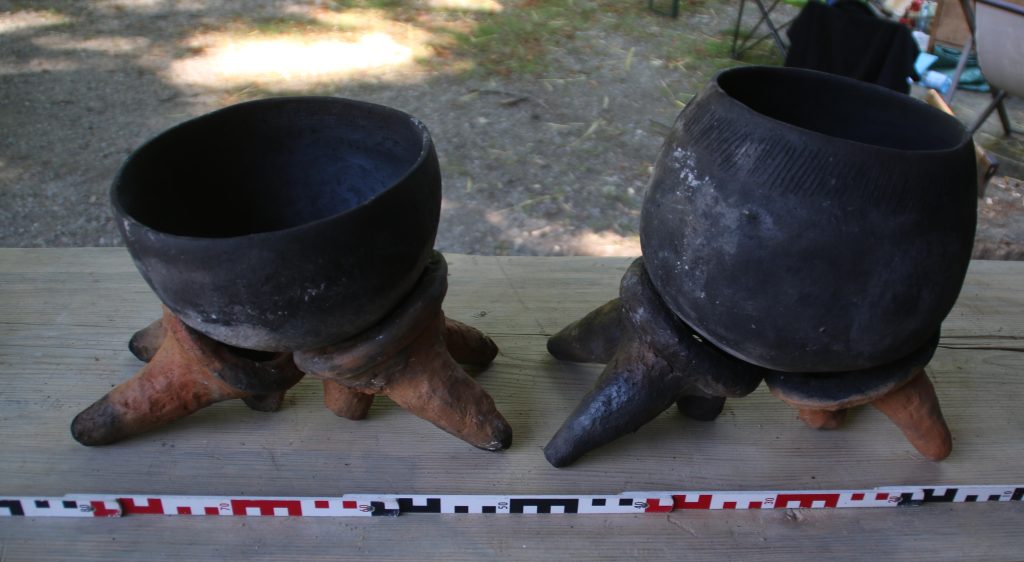
For some canines, all this effort and attention to the curious fire dogs remains incomprehensible. The different smells at the experimental archaeological site were a lot more exciting here.
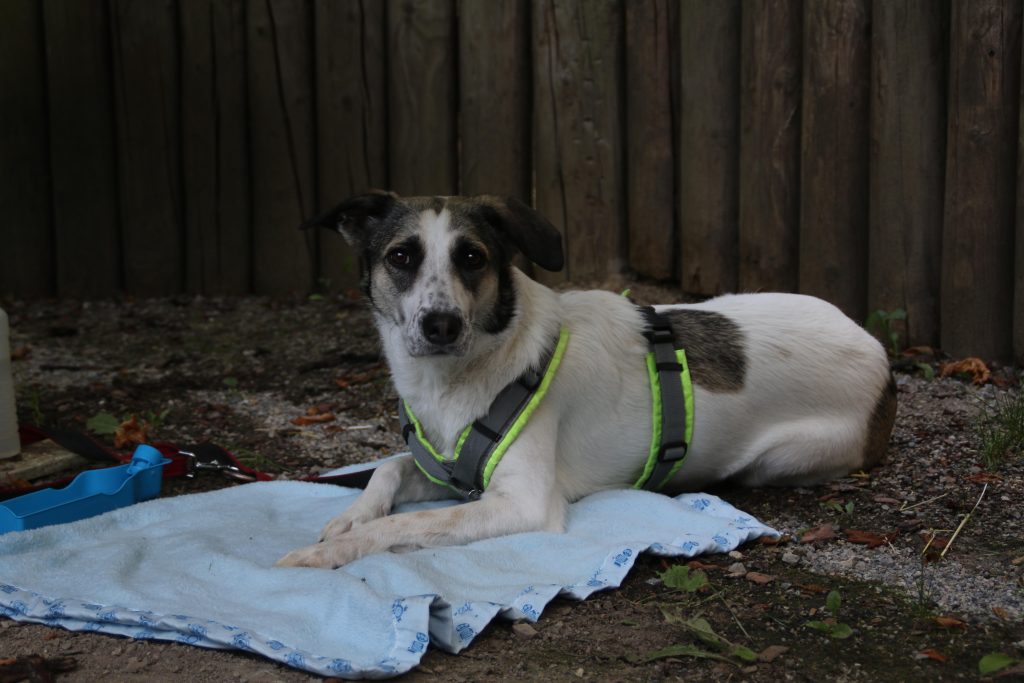
References
Budka and D’Ercole 2022 = Budka, J. and D’Ercole, G. 2022. An Experimental Approach to Assessing the Tempering and Firing of Local Pottery Production in Nubia during the New Kingdom Period. EXARC Journal 2022/2. https://exarc.net/ark:/88735/10638
Verly et al. 2021 = Verly, G., Rademakers, F.W., Somaglino, C., Tallet, P., Delvaux, L. and Degryse, P. 2021. The chaîne opératoire of Middle Kingdom smelting batteries and the problem of fuel: excavation, experimental and analytical studies on ancient Egyptian metallurgy. Journal of Archaeological Science: Reports 37 (article no. 102708) DOI: 10.1016/j.jasrep.2020.102708
